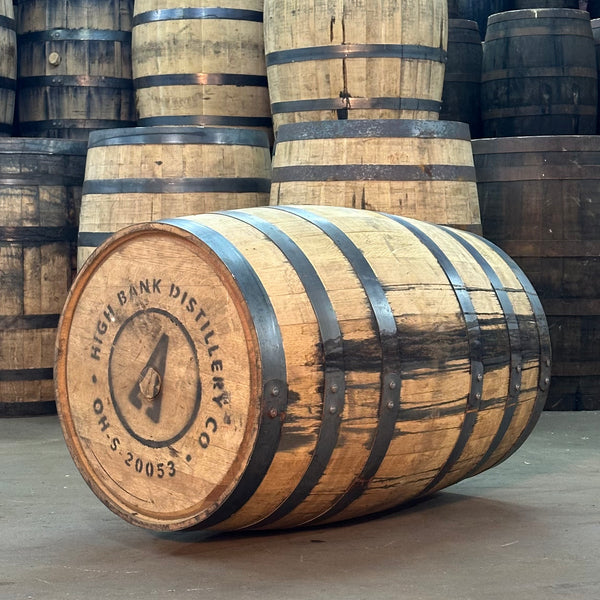Did you know that the oldest wine ever discovered is almost 2,000 years old? While this wine is no longer drinkable, there are other very old wines that any wine connoisseur would love to try. However, why is aging wine so important and how can aging wine in a neutral oak barrel make any difference?
If you’re asking yourself these questions, you’ve clicked on the right article to find your answers. Here, you’ll discover the benefits of using neutral oak for wine aging as well as the difference between new oak vs neutral oak. As you understand more about wine aging and the types of oak barrels, you’ll be able to make better choices when it comes to choosing the perfect wines for you.
What Does Aging Wine Mean
You can age wine in virtually any kind of cask whether it be concrete, stainless steel, oak, or ceramic. The vessel used to store and age wine can offer a surprising amount of taste and texture to the wine in question which is why a great deal of thought must go into selecting the right vessel. Oak barrels are one of the oldest vessels for aging wine and have been used since the time of the ancient Romans.
It should be stated that it is not necessary to age wine for extended periods of time. Many manufactures make the decision to ship out their wine as soon as it has fermented and becomes alcoholic. The benefit of this is that more bottles of wine can be sold in a shorter period of time since there will be little to no waiting for wines to age.
However, there is a big downside to not letting wines age. This is because as wines sit and mature, the flavor of the wine becomes richer and more complex. Flavors known as tertiary flavors start to develop and can make your wine tasting experience more complex and interesting.
These changes happen because the alcohol in the wine continuously reacts with the other components in the drink such as sugars and acids. Even the color of wine changes with time due to the process of oxidation. The rate of oxidation has everything to do with how much air is left inside the wine bottle before it is closed.
With age, white wines will become darker almost like honey while red wines will get darker except for around the rim of the bottle where it is lighter. You will also get rich flavors of dried fruit, honey, pepper, or earth that you won’t find with newer wines.
New Oak vs Neutral Oak
Before you ask what the benefits of aging wine in neutral oak barrels are, you might be wondering, “What is neutral oak anyway?” Choosing oak barrels is a very important decision since different types of oak can give different flavors to the wine. Other vessels like stainless steel don’t impart any flavor to the wine, so not much thought is necessary.
All types of oak barrels are versatile in their own ways and can have use for both red and white wines. Oak in general gives wine hints of vanilla and, of course, wood. The flavor can vary even more depending on whether or not wine manufacturers decide to char the inside of the barrels.
If they are charred, your wine will have a unique smoky flavor. But what is the difference between new oak vs neutral oak? New oak’s name gives away its defining characteristic: it is oak that has never aged wine before.
New oak is full of flavor. When wine fills a new oak barrel for the first time, the new oak’s flavor will immediately start to seep into the wine, giving it spicy and bold flavors. When wine ages in new oak, expect it to be stronger than the same kind of wine that is not aged in new oak.
The flavors provided by new oak do not last forever. The more times the same new oak barrel ages wine, the less flavor it passes to the wine. After about three batches of wine, a new oak barrel is no longer considered new, but instead becomes neutral oak.
While this may sound undesirable, for some wine manufacturers and tasters, it’s just the profile they desire.
Benefits of Aging Wine in Neutral Oak
Some wine manufacturers and tasters might not want the strong flavors of new oak in their wine, especially since these flavors only intensify as the wine ages. Instead, some might want to preserve the natural fruity flavors of the wine itself with only minimal changes from the oak vessels. This is where neutral oak comes in.
Neutral oak no longer gives any flavor to the wine, but this does not make it the same as stainless steel vessels. The unique characteristic of neutral oak is that it is slightly permeable to oxygen, therefore allowing for slight oxygenation of the wine. Oxygenation is ideal for letting the wine’s own flavors integrate more with each other.
Neutral oak is also a great choice for more delicate wines that would otherwise be overpowered by new oak barrels. This is especially true for tannic wines.
Understanding the Different Types of Oak Barrels
By the end of this article, you should know all about the difference between new oak and neutral oak barrels. While new oak can give wine strong, woody flavors, neutral wine can help a wine’s natural flavors get to know each other better. With this information, you can always pick the right kind of wine for your mood and taste.
At Northeast Barrel Company, we provide neutral red and white wine barrels to use for your beer, wine, spirit or food product. To learn more, contact us here.







